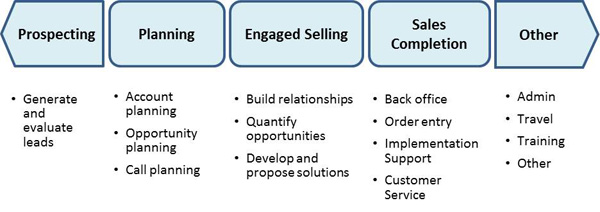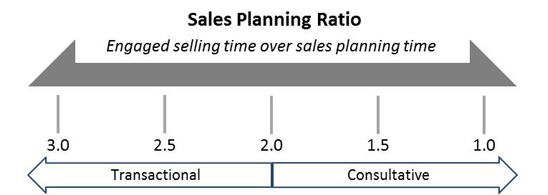Are Your Sales People Getting Enough Quality Sales Time?
Once upon a time a salesperson would make a call on a prospect. He would arrange a business lunch so the two could get acquainted, exchange business cards and simply learn a little about each other’s businesses. The conversation would serve to qualify if there was an interest in meeting again so that the salesperson might ask a few more questions about the prospect’s business and share some information about the products the salesperson had to offer. If there was continued interest on the part of the prospect, he would invite the salesperson to his office where they could discuss things in more detail and eventually strike up a deal with an initial order.
Sound Quaint?
It is. Those days are over. Buyers are more sophisticated, more informed, more time crunched and more demanding than ever. Most buyers are considerably further down the decision process by the time they agree to meet with a salesperson than before. They have already researched their options. They have narrowed their choices. As a result, they have zero patience for sharing information about their company that is readily available to the public. They are willing to take the meeting because they are seeking insights and answers to specific needs and opportunities. A salesperson that secures a meeting with an economic buyer only to launch into a barrage of questions about the buyer’s business, or worse, begins spewing information about their products, is swiftly shown the door and not invited back. In many respects, the role of the sales person has never been harder.
Little Time.
The average salesperson spends less than 15% of their time engaging with customers to build relationships and quantify specific opportunities. That may seem surprisingly low, but it shouldn’t in light of current trends. Buyers don’t have time for this. Sales people must show up prepared. Every minute counts. The average salesperson spends even less time – just under 10%– actually developing solutions, presenting and closing deals. Combined, this amounts to a little over 24% of the typical salesperson’s time spent doing what we refer to as Engaged Selling, which is a key input metric of sales productivity.
 How the salesperson is spending the other +75% of their time is also critical to his success. Can some of this time be freed up in order to gain more engaged selling time? Most likely, yes. In fact top performing sales reps have found ways to work more efficiently and often spend closer to 35% in engaged selling. Sales leaders should always be striving to off-load unnecessary, low-value activities and coaching to increase focus on engaged selling time. But equally important if not more important than the quantity of engaged selling time is the quality of this precious time the sales person has with the buyer. They must be prepared, equipped and enabled. They must strategize and plan in order to make every minute of the customer’s time valuable. Are they showing up and asking needless questions? Are they pushing products, or “solutions”? Or, are they sharing insights?
How the salesperson is spending the other +75% of their time is also critical to his success. Can some of this time be freed up in order to gain more engaged selling time? Most likely, yes. In fact top performing sales reps have found ways to work more efficiently and often spend closer to 35% in engaged selling. Sales leaders should always be striving to off-load unnecessary, low-value activities and coaching to increase focus on engaged selling time. But equally important if not more important than the quantity of engaged selling time is the quality of this precious time the sales person has with the buyer. They must be prepared, equipped and enabled. They must strategize and plan in order to make every minute of the customer’s time valuable. Are they showing up and asking needless questions? Are they pushing products, or “solutions”? Or, are they sharing insights?
Quality Time.
Planning is one of the most important activities to ensure that the time with the customer is time well spent. As they say, “failing to plan is planning to fail.” The average salesperson spends only 12% of his time on call planning. Too often reps are going on calls unprepared or under prepared. While planning time may be less important for transactional, “product” selling, it is absolutely critical for selling complex solutions. The importance of balancing selling time with planning time has led us to developing the Sales Planning Ratio.

This ratio helps sales leaders who track sales time to evaluate how well their sales people are at balancing time between planning and selling. The average rep spends twice as much time (24%) on engaged selling as they do on planning (12%). If you want your sales force to move toward a more consultative selling approach, your reps need to spend more time planning. This includes more planning at the account level, the opportunity (or deal) level and at the call level. Companies that identify and document their best practices and provide more guidance to their sales people experience shorter sales cycles, higher quota attainment, and nearly 8% higher annual revenue growth, according to a recent study by the Aberdeen Group. How much time do your sales people spend planning? How well equipped are they at these planning steps?
To learn more about analyzing your sales time, go to the Alexander Group’s sales analytics page.